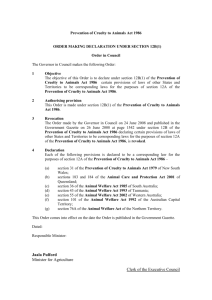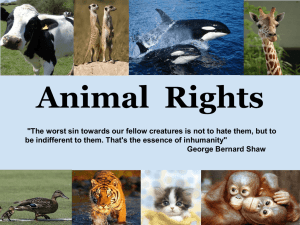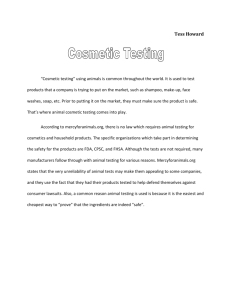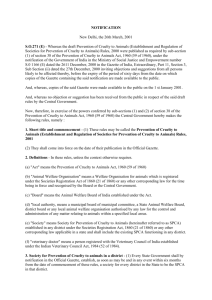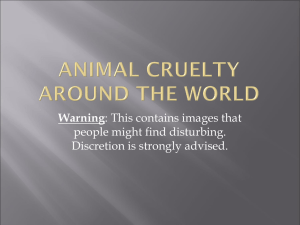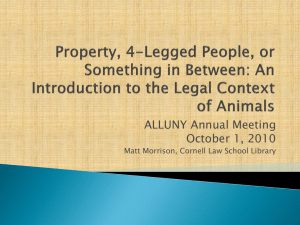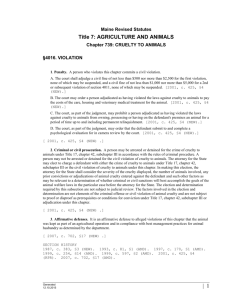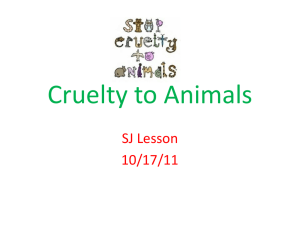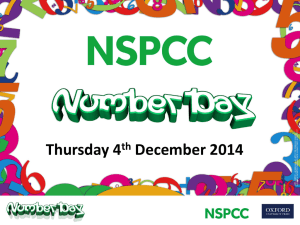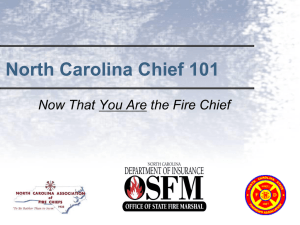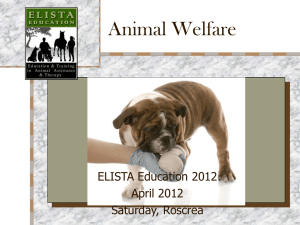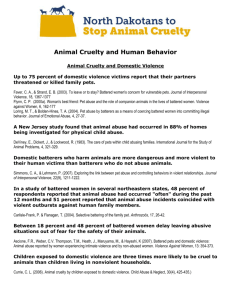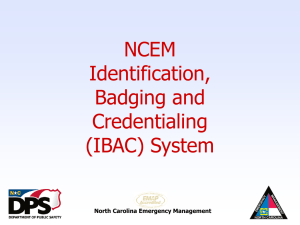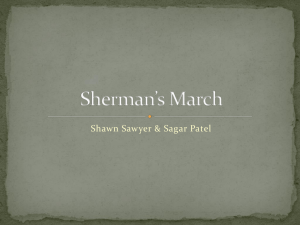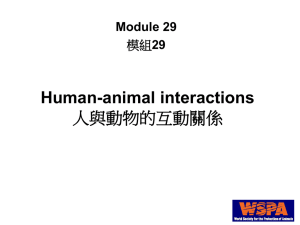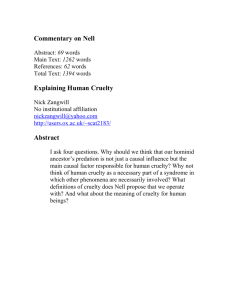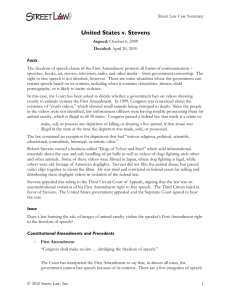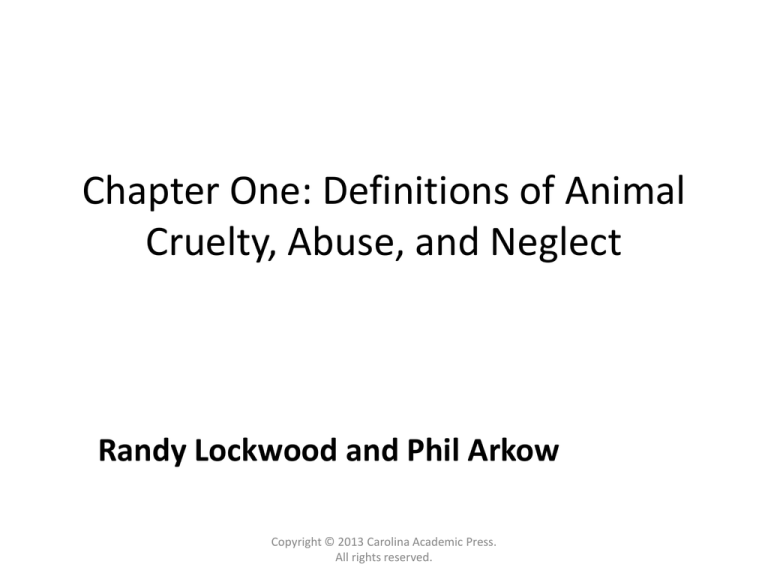
Chapter One: Definitions of Animal
Cruelty, Abuse, and Neglect
Randy Lockwood and Phil Arkow
Copyright © 2013 Carolina Academic Press.
All rights reserved.
Introduction
• Animal cruelty is difficult to define.
• Laws reflect cultural norms.
• Historically, concern regarding animal cruelty
focused on the loss of the use of the animal(s) as
property, or on other harm to humans resulting
from the animal cruelty.
• (e.g., St. Thomas Aquinas, Emmanuel Kant).
• Defining animal cruelty as an evil based on the
harm to the animal itself is relatively recent.
• (e.g., Reverend Humphrey Primatt).
Copyright © 2013 Carolina Academic Press.
All rights reserved.
Definitions of Terms
• Most state anti-cruelty statutes are composed
of six elements:
• The types of animals protected
• The types of acts prohibited or duties of care required
• The mental culpability required to meet a standard of
liability
• The defenses to criminal liability
• Certain activities exempted from the law
• Penalties for each offense
Copyright © 2013 Carolina Academic Press.
All rights reserved.
Definitions
• Dimensions affecting societal and legal
response to cruel acts
• The intrinsic or extrinsic value of the animal victim
• The deviant nature of the act itself
• Public and professional recognition of the victims’ capacity
for stress, pain, fear, or suffering
• The financial costs of enforcement
Copyright © 2013 Carolina Academic Press.
All rights reserved.
Definitions
• Acts of animal cruelty may be individualized
versus institutionalized.
• Most cases reported to humane law
enforcement agencies are cases of neglect,
rather than abuse.
• Definitions of animal cruelty vary between
countries and even between time periods in
one country.
Copyright © 2013 Carolina Academic Press.
All rights reserved.
Perspectives on Definitions
• Scholars have been unsuccessful in coming up
with a definition thus far.
• Felthous and Kellert’s (1987) definition had
inherent problems.
– Substantial cruelty to animals is a “pattern of deliberately,
repeatedly, and unnecessarily hurting vertebrate animals in a
manner likely to cause serious injury.”
Copyright © 2013 Carolina Academic Press.
All rights reserved.
Perspectives on Definitions
• Ascione (1993) defined animal cruelty as “socially
unacceptable behavior that intentionally causes
unnecessary pain, suffering, or distress to and/or
death of an animal.”
• Ascione and Shapiro (2009) defined animal
abuse.
– They changed the term from “cruelty” to “abuse.”
– They added “non-accidental” to fit with the new veterinary forensics
terminology (Non-Accidental Injury or NAI).
– They eliminated the word “intentionally.”
Copyright © 2013 Carolina Academic Press.
All rights reserved.
Government Panels
• The Brambell Commission in UK (led by Prof.
Brambell) investigated the welfare farmed
animals.
• The Farm Animal Welfare Council codified the
Five Freedoms:
–
–
–
–
–
Freedom from hunger and thirst
Freedom from discomfort
Freedom from pain, injury, and disease
Freedom to express normal behavior
Freedom from fear and distress
Copyright © 2013 Carolina Academic Press.
All rights reserved.
Public Opinion
• Morgan (1983) described a continuum of
public attitudes toward animals.
– Radical attitudes—Animal Liberation and activist Animal Rights
– Centrist attitudes—Animal Welfare and Animal Control
– Conservative attitudes—Animal Use and Animal Exploitation
Copyright © 2013 Carolina Academic Press.
All rights reserved.
Legislation and Law Enforcement
• Anti-cruelty statutes are most often found among offenses against
public morals, order, and decency (with little focus on the victim).
• Animal welfare laws vary from state to state, and are ever-changing.
Copyright © 2013 Carolina Academic Press.
All rights reserved.
The full set of PowerPoint slides is
available upon adoption.
Email bhall@cap-press.com
for more information.


